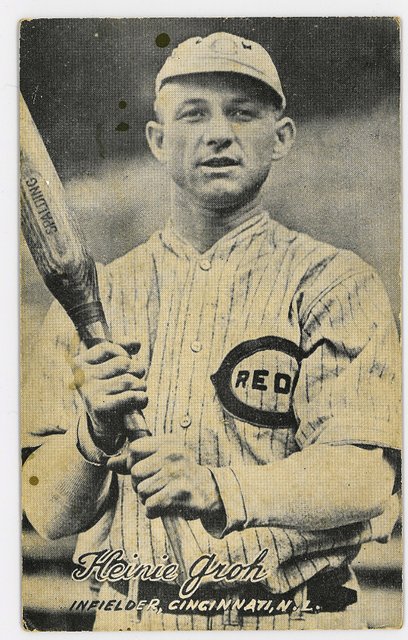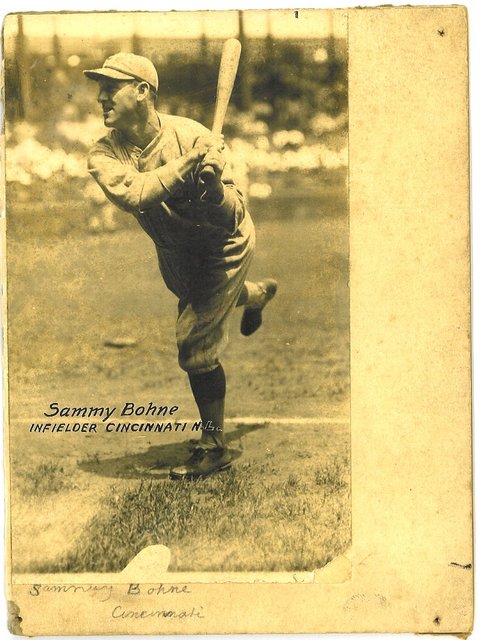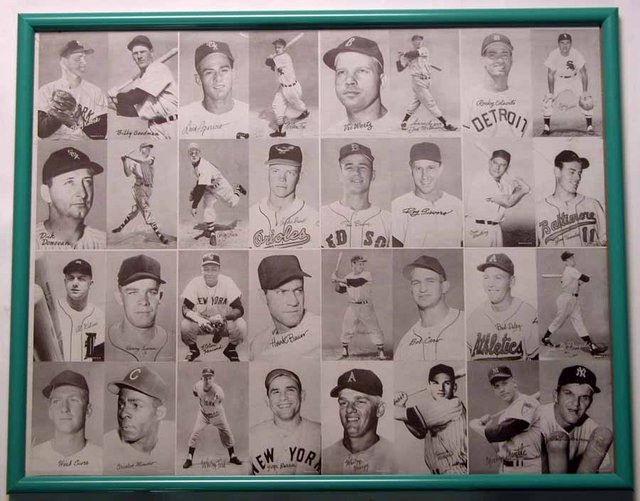I am absolutely convinced that the 1921-23 'sets' overlapped and that the latter issues represent replacement cards and additional cards. That pattern holds in the boxing sets as well, which are easy to actually date because they have written backs with copyright dates on them. It appears that the company came out with sets of 64 cards in 1921 then started additions and removals after that for two years. That is why the 1921 issue is the easiest to finish--by far--and the 1923-24 set is so difficult: a good chunk of the 1921 set was issued in 1922 and even in 1923. It is also why some of the 1921 cards seem easier than others: I believe there are short prints within 1921 itself, representing cards that were removed in 1922 or 1923. A prime example is Groh, with the bottle bat:

Most of the collectors I know who worked on the set had some trouble finding a Groh card. Groh was traded from the Reds to the Giants in December 1921. There is no 1922 or 1923 Groh reflecting the trade. Yet ESCO regularly updated team info in the 1920s. When Joe Dugan went from the Sox to the Yankees, for example, his card was updated. Updating required redoing the original art, which was pen writing on a photograph:

then reshooting it and making a new printing plate. Apparently no one bothered with Groh.
Then there are the reconfigured cards in the 1923 issue, which are 1921s with borders added [e.g., Ruth] or 1921s with background details removed and/or different cropping [e.g., Veach]. In both cases the original artwork was reused but altered with "tricks" to make a new card. IMO this was a labor-saving device that the company's artists came up with in order to generate "new" sets at less effort [cost]. I also know from analysis of postwar cards that the company reused art for as long as it could and thus created substantial spillover from one "set" to another. This sheet has a Salutations Ted Williams next to a 1961 Rocky Colavito:

The 1921-1922-1923 set differentiation was the work of Elwood "Woody" Scharf, who pioneered the study of these cards. His analysis was the result of his best effort; it is not canon law.